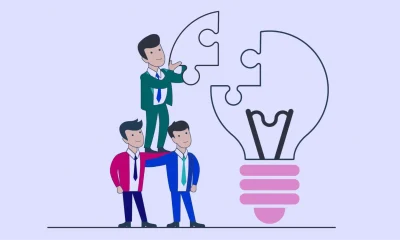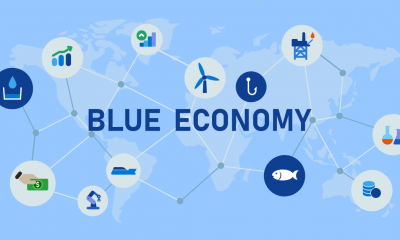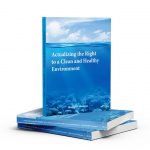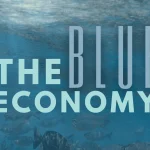By Hon. Prof. Kariuki Muigua, OGW, PhD, C.Arb, FCIArb is a Professor of Environmental Law and Dispute Resolution at the University of Nairobi, Member of Permanent Court of Arbitration, Leading Environmental Law Scholar, Respected Sustainable Development Policy Advisor, Top Natural Resources Lawyer, Highly-Regarded Dispute Resolution Expert and Awardee of the Order of Grand Warrior (OGW) of Kenya by H.E. the President of Republic of Kenya. He is the Academic Champion of ADR 2024, the African ADR Practitioner of the Year 2022, the African Arbitrator of the Year 2022, ADR Practitioner of the Year in Kenya 2021, CIArb (Kenya) Lifetime Achievement Award 2021 and ADR Publisher of the Year 2021 and Author of the Kenya’s First ESG Book: Embracing Environmental Social and Governance (ESG) tenets for Sustainable Development” (Glenwood, Nairobi, July 2023) and Kenya’s First Two Climate Change Law Book: Combating Climate Change for Sustainability (Glenwood, Nairobi, October 2023), Achieving Climate Justice for Development (Glenwood, Nairobi, October 2023), Promoting Rule of Law for Sustainable Development (Glenwood, Nairobi, January 2024) and Actualizing the Right to a Clean and Healthy Environment (Glenwood, Nairobi, January 2024)*
The term gender refers to the set of social norms, practices and institutions that regulate the relations between women and men in a society. It has also been defined as a social construct that ascribes different qualities and rights to women and men regardless of individual competence or desires. Further, the term gender is also used to refer to the socially-constructed expectations about the characteristics, aptitudes and behaviours associated with being a woman or a man, and while gender defines what is feminine and masculine, it shapes the social roles that men and women play and the power relations between them, which can have a profound effect on the use and management of natural resources.
Gender equality entails giving men and women equal treatment when it comes to rights, responsibilities and opportunities. It enshrines equal outcomes for women, men and gender-diverse people. Gender equity on the other hand is about fairness. In order to ensure everyone has equal opportunities, gender equity considers privilege, bias and other parameters that can limit how people access opportunities.
Gender equity is the process to achieve gender equality. It recognizes that due to historical and social disadvantages some people especially women are not in the same position as men and thus treating them ‘equally’ may not be fair hence the need to address these inequalities. It has been observed that men and women relate to the environment in different ways, and environmental changes have different impacts on their lives.
Women play a critical role in sustaining communities and managing natural resources, but their contributions are often undervalued and neglected. For example, women play a central part in the provision, management and safeguarding of freshwater as a natural resource, and they are often responsible for sanitation and maintaining a hygienic home. Women are also more likely than men to live in poverty, and they are more vulnerable to the impacts of climate change and other environmental hazards, especially in developing countries.
Natural disasters such as erosion and other forms of soil degradation, pollution of freshwaters, shore-line erosion, flooding, loss of wetlands, drought and desertification impact directly on women in their roles as providers of food, water and fuel. It has also been observed that climate change can also impact on women’s productive roles since its impacts such as rising sea levels, flooding in low-lying delta areas and increased salt-water intrusion can jeopardize sustainable livelihood strategies. Further, food security and family well-being are threatened when the resource base on which women rely to carry out their critical roles and obtain supplementary incomes is undermined.
Agriculture is the most important employment sector for women in low and middle income countries and therefore, during periods of drought and erratic rainfall, women, as agricultural workers and primary procurers, work harder to secure income and resources for their families. This puts added pressure on girls, who often have to leave school to help their mothers manage the increased burden. Women also bear a disproportional burden of deteriorating water quality and availability in rural and urban areas due to environmental problems such as pollution and drought and have to travel long distances in search of water to sustain households.
Based on the foregoing, it has been argued that women were more worried about climate change than men and that more women than men felt they could do something to curb climate change and were prepared to take action to that effect. Actualizing gender equity and giving women a voice in environmental decision making can therefore foster environmental sustainability. In addition, in the context of corporate governance, it has been observed that women play a more significant role, compared to men, in establishing positive values in terms of social welfare but also toward reducing carbon emissions. Thus, enhancing board gender diversity is vital in enabling firms to ‘go green.’
Gender board diversity is positively related to a firm’s ‘environmental consciousness and foster environmental sustainability initiatives through Corporate Social Responsibility (CSR) activities. To this extent, it has been argued that women have a lower proclivity for unethical business behavior and are more socially oriented than men, which could mean that more gender diverse boards are less likely to engage in unethical behavior and be more effective in CSR-related decision-making. Actualizing gender equity in board decision making can thus enhance environmental sustainability.
Based on the foregoing, it has been asserted that Gender equity and environmental sustainability are gaining political momentum as global challenges that require urgent co-ordinated action. Women and men around the world are affected differently by climate change, deforestation, land degradation, desertification, unsustainable infrastructure, growing water scarcity and inadequate sanitation, making the goals of gender equality and environmental sustainability mutually reinforcing. Integrating a gender lens to environmental data collection and policy making can thus foster environmental sustainability.
*This is an extract from Kenya’s First Clean and Healthy Environment Book: Actualizing the Right to a Clean and Healthy Environment (Glenwood, Nairobi, January 2024) by Hon. Prof. Kariuki Muigua, OGW, PhD, Professor of Environmental Law and Dispute Resolution, Senior Advocate of Kenya, Chartered Arbitrator, Kenya’s ADR Practitioner of the Year 2021 (Nairobi Legal Awards), ADR Lifetime Achievement Award 2021 (CIArb Kenya), African Arbitrator of the Year 2022, Africa ADR Practitioner of the Year 2022, Member of National Environment Tribunal (NET) Emeritus (2017 to 2023) and Member of Permanent Court of Arbitration nominated by Republic of Kenya and Academic Champion of ADR 2024. Prof. Kariuki Muigua is a foremost Environmental Law and Natural Resources Lawyer and Scholar, Sustainable Development Advocate and Conflict Management Expert in Kenya. Prof. Kariuki Muigua teaches Environmental Law and Dispute resolution at the University of Nairobi School of Law, The Center for Advanced Studies in Environmental Law and Policy (CASELAP) and Wangari Maathai Institute for Peace and Environmental Studies. He has published numerous books and articles on Environmental Law, Environmental Justice Conflict Management, Alternative Dispute Resolution and Sustainable Development. Prof. Muigua is also a Chartered Arbitrator, an Accredited Mediator, the Managing Partner of Kariuki Muigua & Co. Advocates and Africa Trustee Emeritus of the Chartered Institute of Arbitrators 2019-2022. Prof. Muigua is a 2023 recipient of President of the Republic of Kenya Order of Grand Warrior (OGW) Award for his service to the Nation as a Distinguished Expert, Academic and Scholar in Dispute Resolution and recognized among the top 5 leading lawyers and dispute resolution experts in Band 1 in Kenya by the Chambers Global Guide 2024 and was listed in the Inaugural THE LAWYER AFRICA Litigation Hall of Fame 2023 as one of the Top 50 Most Distinguished Litigation Lawyers in Kenya and the Top Arbitrator in Kenya in 2023.
References
‘What Is Gender and Biodiversity?’ Available at https://www.cbd.int/gender/biodiversity/ (Accessed on 11/08/2023).
African Charter on Human and People’s Rights., Available at https://au.int/sites/default/files/treaties/36390-treaty-0011_- _african_charter_on_human_and _peoples_rights_e.pdf (Accessed on 12/08/2023).
Crabtree. E., ‘Why we Need Gender Equity, Not Just Equality.’ Available at https://iqeq.com/insights/why-we-need-gender-equity-not-justequality/#:~:text=Gender%20equality%20is%20giving%20all,limit%20 how%20people%20access%20 opportunities. (Accessed on 11/08/2023).
DCED., ‘Gender Equality vs Equity.’ Available at https://www.enterprisedevelopment.org/weegateway/gender-equality-vs-equity/ (Accessed on 11/08/2023).
De Silva. DG., & Pownall. RA., ‘Going Green: Does it Depend on Education, Gender or Income? ‘ Applied Economics, Volume 46, No. 5. (2014) pp573–586.
Fitzmaurice. M., ‘The Principle of Sustainable Development in International Development Law.’ International Sustainable Development Law., Vol 1.
- J. Latham, “A study on gender equality as a prerequisite for sustainable development,” Report to the Environment Advisory Council, Sweden 2007:2, p. 17. Available at http://www.uft.oekologie.unibremen.de/hartmutkoehler_fuer_studierende/MEC/ 09-MECreading/gender%202007%20EAC%20rapport_engelska.pdf (Accessed on 11/08/2023).
Geneva Environment Network., ‘Gender and the Environment.’ Available at https://www.genevaenvironmentnetwork.org/resources/updates/gender-and-theenvironment/ (Accessed on 11/08/2023).
Goodland. R., ‘The Concept of Environmental Sustainability.’ Annual Review of Ecology and Systematics, Volume 26 (1995), 1-24.
Hannan. C., ‘Mainstreaming Gender Perspectives in Environmental Management and Mitigation of Natural Disasters.’ Available at https://web.archive.org/web/20180721174301id_/http://www.un.org/ womenwat ch/osagi/pdf/presnat%20disaster.PDF (Accessed on 12/08/2023).
IUCN., ‘Gender and the Environment: What are the Barriers to Gender Equality in Sustainable Ecosystem Management?’ Available at https://www.iucn.org/news/gender/202001/gender-and-environment-what-are-barriers-gender-equality-sustainable-ecosystem-management (Accessed on 12/08/2023).
Kariuki. J., & Birner. R., ‘Exploring Gender Equity in Ecological Restoration: The Case of a Market Based Program in Kenya.’ Available at https://er.uwpress.org/content/wper/39/1-2/77.full.pdf (Accessed on 12/08/2023).
Kassinis. G et al., ‘Gender and Environmental Sustainability: A Longitudinal Analysis.’ Corporate Social Responsibility and Environmental Management (2016).
Morelli. J., ‘Environmental Sustainability: A Definition for Environmental Professionals.’ Journal of Environmental Sustainability, Volume 1, Issue 1 (2011).
Muigua. K., ‘Actualising the National Policy on Gender and Development in Kenya.’ Available at http://kmco.co.ke/wp-content/uploads/2020/10/Actualising-theNational-Policy-on-Gender-and-Development-in-Kenya-Kariuki-Muigua-Ph.DOctober-2020.pdf (Accessed on 12/08/2023).
Muigua. K., ‘Gender Perspectives in Biodiversity Conservation.’ Available at http://kmco.co.ke/wp-content/uploads/2021/11/Gender-Perspectives-inBiodiversity-Conservation-Kariuki-Muigua-November-2021.pdf (Accessed on 11/08/2023).
Muigua. K., ‘Towards Meaningful Public Participation in Natural Resource Management in Kenya.’ Available at http://kmco.co.ke/wpcontent/uploads/2018/08/TOWARDS-MEANINGFUL-PUBLIC-PARTICIPATIONIN-NATURAL-RESOURCE-MANAGEMENT-IN-KENYA.pdf (Accessed on 12/09/2023).
Organization for Security and Co-operation in Europe., ‘Gender and the Environment.’ Available at https://www.osce.org/files/f/documents/4/f/36360.pdf (Accessed on 12/08/2023).
Protocol to the African Charter on Human and Peoples’ Rights on the Rights of Women in Africa., Available at https://www.ohchr.org/sites/default/files/Documents/Issues/Women/WG/Prot ocolontheRightsofWomen.pdf (Accessed on 12/08/2023).
Report of the World Commission on Environment and Development., ‘Our Common Future’ 1987 (Brundtland Report).
Republic of Kenya., ‘Sessional Paper No. 02 of 2019 on National Policy on Gender and Development.’ Available at http://psyg.go.ke/wpcontent/uploads/2019/12/NATIONAL-POLICY-ON-GENDER-ANDDEVELOPMENT.pdf (Accessed on 12/08/2023).
Robinson. D., ‘15 Biggest Environmental Problems of 2023.’ Available at https://earth.org/the-biggest-environmental-problems-of-our-lifetime/ (Accessed on 11/08/2023).
Shobeiri. S., & Meiboudi. H., ‘Women’s Participation in Environmental Management and Development Promotion Culture.’ Available at https://www.researchgate.net/publication/311533595_Women’s _participation_in_e nvironmental_management_and_development_Promotion_Culture#:~:text=Women %20are%20the%20main%20cause,environmental%20management%20are%20so%20o bvious. (Accessed on 12/08/2023).
SIDA., ‘Gender and the Environment.’ Available at https://cdn.sida.se/publications/files/-gender-and-the-environment.pdf (Accessed on 11/08/2023).
Sphera., ‘What Is Environmental Sustainability?’ Available at https://sphera.com/glossary/what-is-environmental-sustainability/ (Accessed on 11/08/2023).
The Organization for Economic Cooperation and Development., ‘Gender and the Environment.’ Available at https://www.oecd.org/env/gender-and-theenvironment-3d32ca39-en.htm (Accessed on 12/08/2023).
UN Women., ‘Explainer: How Gender Inequality and Climate Change are Interconnected.’ Available at https://www.unwomen.org/en/newsstories/explainer/2022/02/explainer-how-gender-inequality-and-climate-changeare-interconnected?gclid=CjwKCAjw29ymBhAKEiwAHJbJ8p-iWBVsiOQq0h8- HiXaObwP7T1nztSxRGPldFcxcRs-fIzzRIQIgRoCVrIQAvD_BwE (Accessed on 12/08/2023).
UNICEF., ‘Climate Change and Environmental Sustainability.’ Available at https://www.unicef.org/india/what-we-do/climate-change (Accessed on 11/08/2023).
United Nations Department of Economic and Social Affairs., ‘Forum on Climate Change and Science and Technology Innovation.’ Available at https://www.un.org/en/desa/forum-climate-change-andscience-and-technologyinnovation (Accessed on 11/08/2023).
United Nations Environment Programme., ‘About Gender.’ Available at https://www.unep.org/explore-topics/gender/about-gender (Accessed on 11/08/2023).
United Nations Framework Convention on Climate Change., ‘New Report: Why Climate Change Impacts Women Differently than Men.’ Available at https://unfccc.int/news/new-report-why-climate-change-impacts-womendifferently-thanmen?gclid=CjwKCAjw29ymBhAKEiwAHJbJ8ssIfst99WBehD0DHNpgs bjqaHye6wO iIPq9xBR4ZYRvsL8yf_KNgxoCskUQAvD_BwE (Accessed on 12/08/2023).
United Nations General Assembly., ‘Report of the United Nations Conference On Environment and Development: Rio Declaration on Environment and Development.’ A/CONF.151/26 (Vol. I), Principle 3.
United Nations, “The Role of Men and Boys in Achieving Gender Equality,” Women 2000 and Beyond, December 2008, p.4. Available at http://www.unwomen.org/~/media/headquarters/media/publications/un/en/w 2000menandboyseweb.pdf (Accessed on 11/08/2023).
United Nations., ‘Report of the United Nations Conference on the Human Environment, Stockholm, 5-16 June 1972’ Principle 2.
United Nations., ‘Report of the World Conference to Review and Appraise the Achievements of the United Nations Decade for Women: Equality, Development and Peace.’ AlCONF.116128/Rev.1 48.
United Nations., ‘Transforming Our World: The 2030 Agenda for Sustainable Development.’ Available at https://sustainabledevelopment.un.org/content/documents/21252030%20Agenda %20for%20Sustain able%20Development%20web.pdf (Accessed on 12/08/2023).
United Nations., ‘What is Climate Change?’ Available at https://www.un.org/en/climatechange/what-is-climate-change (Accessed on 11/08/2023).





 Lawyers2 years ago
Lawyers2 years ago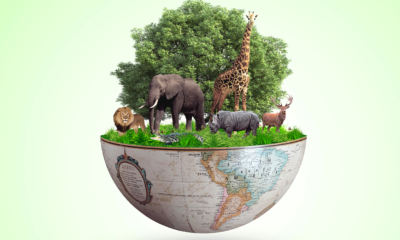
 News & Analysis3 years ago
News & Analysis3 years ago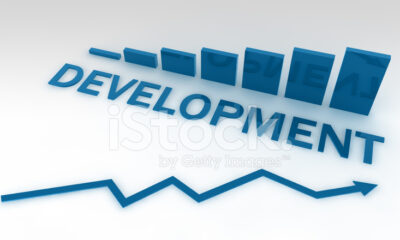
 News & Analysis3 years ago
News & Analysis3 years ago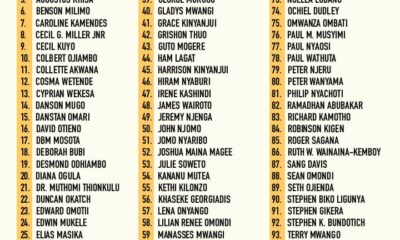
 Lawyers2 years ago
Lawyers2 years ago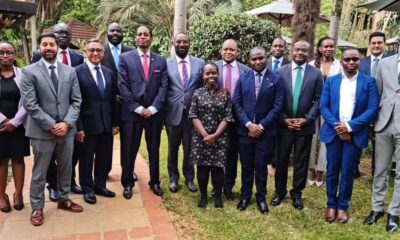
 News & Analysis3 years ago
News & Analysis3 years ago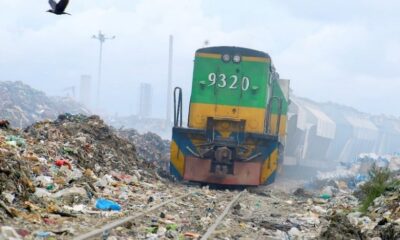
 News & Analysis1 year ago
News & Analysis1 year ago
 News & Analysis3 years ago
News & Analysis3 years ago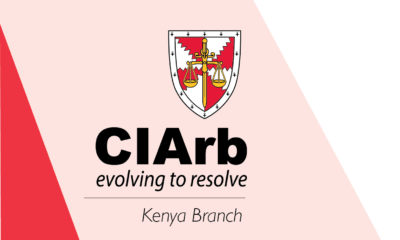
 News & Analysis1 year ago
News & Analysis1 year ago













